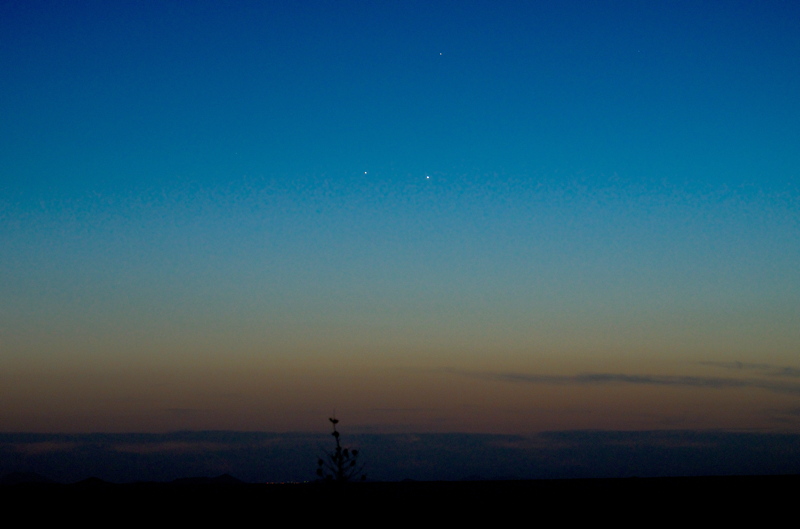
Critters, Visitors, Ending Jupiter-Venus-Mercury Conjunction
Posted: 28 May 2013
Another pack rat was captured and released on Monday, 27 May 2013. Count is now 15 live pack rats and 2 dead ones. Occasionally, an antelope squirrel will also be captured, as was the case during the afternoon. I release them without relocating them. Here's a photo of one of the local antelope squirrels, as photographed during my 11-12 May 2007 stay at "Oracle Observatory":

The observatory was opened at 1818 MST, 98°F. The sky was clear, with a slight breeze. I powered on the Meade 8" LX200-ACF telescope. At 1827 MST, I viewed Jupiter, 83X, almost an hour before sunset. The equatorial belts were barely visible. At 1831 MST, I viewed Venus, 222X. It showed a slightly gibbous phase. At 1833 MST, I viewed Mercury, 222X. It showed an almost half-moon phase.
Shortly after I ended viewing Mercury, two local residents came for an evening of telescope viewing. These were the same people that I helped with their telescope last week. We viewed Venus, Mercury, and Jupiter through the 8" telescope. At 1934 MST, we left the observatory to view the Jupiter-Venus-Mercury conjunction in the western sky. They viewed the planets with the naked eye and 7x50 binoculars. This was our view at 1956 MST, taken with a Nikon D7000 DSLR, f/4.5, 1/10sec, 70mm, ISO 400:

Mouseover the image above or tap on it if using a touchscreen device (iPad, iPhone, etc.) to see the labels.
Compare the positions of the planets in the above image to their positions on 26 May, 25 May, 24 May, 23 May, 20 May, and 19 May.
This telephoto image (full-frame) was taken at 2003 MST, f/5.6, 1/10sec, 300mm, ISO 400, and shows approximately how the planets appeared in the 7x50 binoculars:

With the planets getting lower in the sky and the western sky darkening, this photo, 2008 MST, f/4.5, 1/5sec, 90mm, ISO 400, was my final one:

At 2014 MST, we returned to the observatory and began observing using the 8" telescope. We first viewed Saturn, using the Explore Scientific 2" 9mm 100° eyepiece (222X). While they had previously seen Saturn through their smaller telescope, they were awed by the view through the 8". The moon Titan was visible (and I could see three other fainter moons). Cassini Division was very clear, with the planet's shadow visible on the Ring and the Ring's shadow visible on the planet. Next, we viewed the Leo Triplet of galaxies (M65, M66, and NGC3628), 83X. Using the Meade 2" 24mm UWA eyepiece (83X), all three galaxies were visible in the same field-of-view (FOV). Using the 2" 24mm eyepiece (83X), we also viewed M51 (Whirlpool Galaxy), M81 and M82 galaxies, M13 (the Great Globular Cluster in Hercules), M92 (another globular cluster in Hercules), M57 (Ring Nebula in Lyra), Epsilon Lyrae (the "Double-Double Star"), and lastly, Albireo (colorful double star). The visitors left at 2144 MST. I'm glad they had good night of viewing.
I took a final look at Saturn, 83X and 222X, at 2150 MST, and then began closing down for the night.
The observatory was closed at 2200 MST, 68°F.
As a proud SkyShed POD owner, I'm always thrilled when I hear about the other great things that the creator of the POD, Wayne Parker, does. Check out this article about his band "Glass Tiger".
Comments are welcome; use the Comments section below, or you can Email Me. Thanks.
Cassiopeia Observatory Home Page